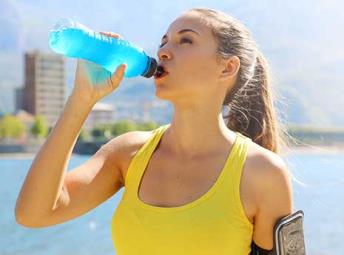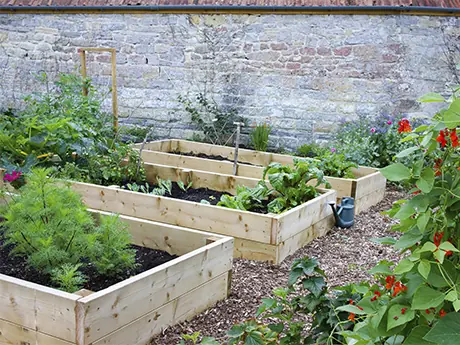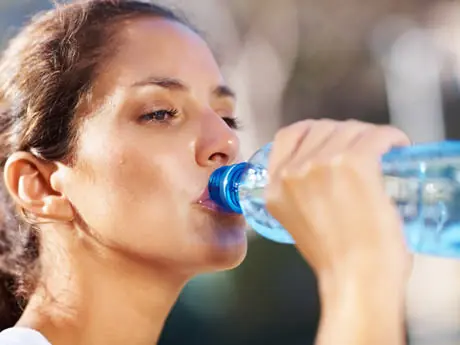Sodium Intake for Athletes
With training and acclimatization, your body will adjust to your typical sodium intake. If your typical sodium intake is modest, sodium losses in sweat will adjust down, with no adverse effects.
But what happens when circumstances are extreme? You might travel to an event where the temperature soars, causing you to sweat much more than usual.
More: 11 Hydration Strategies for Hot Weather
If race day temperatures will be hot, with high humidity, and you typically sweat heavily, you should hydrate with sports drinks that contain electrolytes during the event. Altitude and very dry humidity can also cause fluid loss, even if you don't perceive so much sweat on your skin. Again, go for sports drinks to rehydrate, or use salty snacks or special sports foods that contain sodium.
More: 10 Post-Run Drinks to Fuel Fast Recovery
If you normally avoid eating salty processed foods and snack foods, you could add some salt temporarily ahead of race day. You don't need large amounts of sodium. Salt foods a bit or add some salty snacks like pretzels or bouillion. Some athletes actually drink pickle juice for the sodium content.
If that doesn't appeal to you, stick with pretzels. A mere 1/2-ounce of salted pretzels has roughly the same amount of sodium as 8 ounces of an electrolyte beverage.
If you drink water during the race, but don't replace the lost sodium, hyponatremia, or low blood sodium, can be the unwelcome result.
More: How Much Water Should You Drink?
Hyponatremia
Most research shows that hyponatremia, or low blood sodium, is typically not due to low salt intake. Rather it's caused by excessive sodium loss, possibly aggravated by excessive consumption of plain water. For example, competing in an extreme athletic event, such as a marathon, in high heat and humidity, can put you at risk, because you're losing much more sodium than normal in sweat.
People who work in extreme heat conditions, such as wild land fire fighters, also need to pay attention to salt intake. Again, these are unusual situations that put people at risk.
Hyponatremia can come on quickly. Symptoms include:
- Abdominal bloating
- Swollen fingers and toes
- Swollen ankles and wrists
- Extreme: brain swelling, fatigue, throbbing headache, confusion, loss of coordination
More: Best Long Run Hydration Habits
Rules of Thumb for Electrolytes
Eat plenty of high potassium foods everyday, whatever your training level. Eat modest sodium. Maintain adequate hydration. Replace each pound lost as sweat with about 2 cups of fluid.
When training or competing in high temperatures and extreme conditions, boost sodium intake with electrolyte replacement beverages or extra salt on your food.
More: 15 Hydration Facts for Athletes
 Perfect your nutrition to boost your performance. Sign up for a race near you.
Perfect your nutrition to boost your performance. Sign up for a race near you.
- 2
- of
- 2
About the Author








Discuss This Article